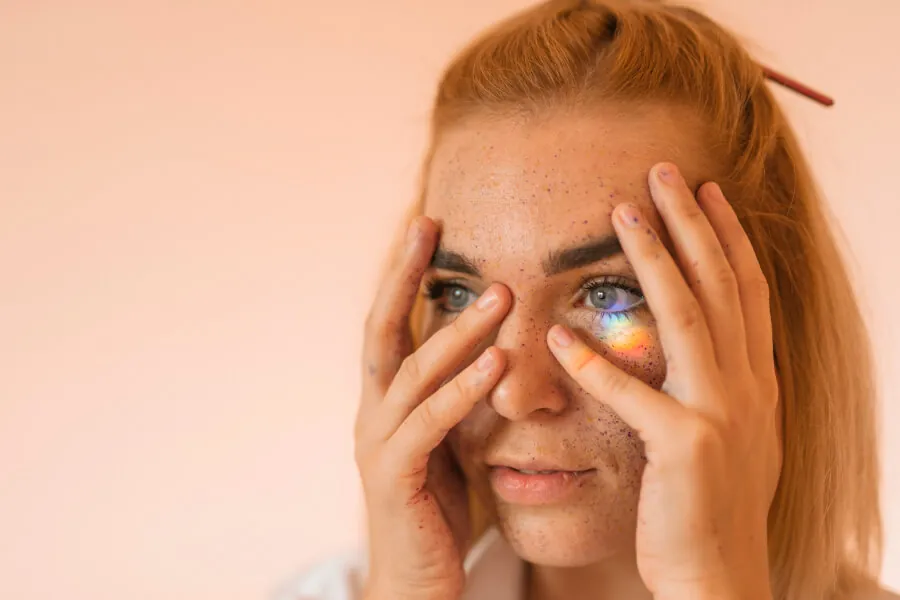Alzheimer’s disease is a progressive brain disorder that affects memory, thinking, and behavior. It is the most common cause of dementia, a term that describes a decline in cognitive abilities that interferes with daily life.
According to the World Health Organization, more than 50 million people worldwide have dementia, and Alzheimer’s disease accounts for 60-70% of the cases. “Health Line”
Does Alzheimer have a cure?
There is no cure for Alzheimer’s, but early detection can help prepare you for its progression and may give you a chance to try treatments that could slow down the symptoms. However, diagnosing it is not easy, as the brain changes that cause the disease start to occur many years before the first signs of memory loss or confusion appear.
What if there was a way to detect Alzheimer’s in its early stages?
This is the idea behind a new and promising research field that explores the link between the eyes and the brain, and how changes in the retina (the light-sensitive layer at the back of the eye) may reflect changes in the brain that are otherwise undetectable.
How can the eyes reveal Alzheimer’s?
Check-up Time: Doctors can look at your eyes to see if there are any signs that might suggest someone has it.
Picture Time: They take special pictures of the back of your eye, called the retina. Changes in this part of the eye can give clues about Alzheimer’s.
Fancy Cameras: One cool tool they use is called Optical Coherence Tomography (OCT). It takes detailed pictures of the layers in the back of your eye. Changes in these layers might mean Alzheimer’s is at play.
Detecting Trouble: Scientists are also experimenting with ways to spot sticky stuff called beta-amyloid in the eye. This stuff is linked to it, and if it shows up in the eye, it could be a sign of the disease.
Pupil Check: They’re even looking at how our pupils react to light. Changes in this response might signal something going wrong in the brain, like Alzheimer’s.
Smart Computers: Scientists are training computers to analyze all these eye pictures. These smart machines can pick up on patterns that might indicate Alzheimer’s disease.
Is it Reliable?: While these eye tests are promising, scientists need to do more tests to make sure they work well for finding Alzheimer’s. It’s like a big puzzle, and they’re still putting all the pieces together.
What are the benefits of eye scans for Alzheimer’s?
Eye scans for Alzheimer’s have several advantages over the current methods of diagnosis, which include cognitive tests, brain scans, and spinal fluid analysis. Eye scans are:
Early Detection: Think of eye scans like a detective looking for clues. By spotting changes in the eye early on, doctors might catch Alzheimer’s disease before it causes big problems with memory and thinking.
No Needles, No Pain: Unlike some tests, eye scans are painless and don’t involve needles or anything scary. It’s just like taking a picture of your eye.
Regular Check-ups: Just like going to the dentist to keep your teeth healthy, getting eye scans could become a regular part of staying healthy as you get older. It’s a quick and easy way to keep tabs on your brain health.
Less Invasive: You don’t have to go through surgery or anything major for an eye scan. It’s a simple procedure that doesn’t require any cuts or stitches.
Monitoring Progress: Once doctors know someone has it, they can use eye scans to keep track of how the disease is progressing over time. This helps them figure out the best ways to help the person stay as healthy as possible.
Hope for Better Treatments: By studying eye scans and what they reveal about Alzheimer’s, scientists can learn more about the disease. This could lead to better treatments or even a cure in the future.
Conclusion
Eye scans are a promising and innovative research field that may offer a new way to detect the disease in its early stages and improve the outcomes for patients and their families. However, they are not yet ready for clinical use and require more validation and standardization. If you are concerned about your memory or cognition, or have a family history of Alzheimer’s, you should talk to your doctor and get a proper assessment.
FAQs
Can eye changes reveal early signs of Alzheimer’s?
Yes, studies suggest that certain eye changes could be linked to early signs of Alzheimer’s. It has been observed that thinning of the retina and the accumulation of amyloid plaques in the eyes could be linked to the disease.
What types of eye changes are associated with Alzheimer’s?
Eye changes associated with Alzheimer’s may include a decrease in retinal thickness, peripheral vision problems, and decreased contrast sensitivity. These changes can be detected through specialized ophthalmological examinations.
How early can these eye changes be detected?
Alzheimer’s-related eye changes can be detected early in the disease, even before characteristic cognitive symptoms appear. However, more research is needed to fully understand the relationship between eye changes and Alzheimer’s.
Are eye changes a definitive diagnosis of Alzheimer’s?
No, eye changes are not a definitive diagnosis of Alzheimer’s on their own. They are potential indicators that may suggest the presence of the disease, but additional evaluations, such as neurological and neuropsychological tests, are required to confirm the diagnosis.
How can changes in the eyes affect the quality of life of a person with Alzheimer’s?
Changes in the eyes can affect the quality of life of a person with it by making everyday tasks such as reading, recognizing familiar faces, or navigating the environment more difficult. Additionally, these changes can increase vulnerability to falls and injuries.
Are there preventive measures to protect eye health and reduce the risk of Alzheimer’s?
Although there is no guaranteed preventive measure against it, maintaining optimal eye health can be beneficial. This includes undergoing regular eye exams, maintaining a balanced diet rich in antioxidants, maintaining a healthy weight, and managing conditions such as diabetes and high blood pressure, which can affect eye health and risk of neurodegenerative disease.





